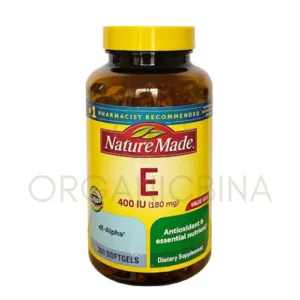news
The Essential Guide to Vitamins & Minerals: A Foundation for Health
In the intricate system of the human body, vitamins and minerals are the unsung heroes, silently working behind the scenes to keep every process running smoothly. They are the micromanager of health, ensuring that our energy production, immune response, and cellular repair functions are operating at their peak. Despite their small size and the tiny quantities we need, their absence can lead to a cascade of health issues. This comprehensive guide will serve as a foundational overview, exploring the fundamental differences between vitamins and minerals, their critical roles, and why a diet rich in these micronutrients is the cornerstone of long-term well-being.

The Two Pillars of Micronutrients
Vitamins: The Organic Catalysts
Vitamins are organic compounds that are vital for metabolism. With the exception of Vitamin D, our bodies cannot produce them, so we must get them from our diet. Vitamins are classified based on how they are absorbed and stored.
- Fat-Soluble Vitamins (A, D, E, and K): These vitamins are absorbed with the help of fats and are stored in the body’s fatty tissues and liver. Because they can accumulate, excessive intake can be toxic.
- Vitamin A (Retinol): Crucial for vision, immune function, and cell growth. Found in sweet potatoes, carrots, and leafy greens.
- Vitamin D (Calciferol): Essential for calcium absorption, bone health, and immune system regulation. Our bodies produce it in response to sunlight.
- Vitamin E (Tocopherol): A powerful antioxidant that protects cells from damage. Found in nuts, seeds, and vegetable oils.
- Vitamin K (Phylloquinone): Vital for blood clotting and bone health. Found in leafy green vegetables.
- Water-Soluble Vitamins (B-complex and C): These vitamins dissolve in water and are not stored in the body. They are easily excreted, so a consistent daily intake is necessary.
- Vitamin C (Ascorbic Acid): A key antioxidant and a vital component for collagen production and immune function. Found in citrus fruits, bell peppers, and broccoli.
- B-Vitamins: A group of eight vitamins that play interconnected roles in energy metabolism, nerve function, and red blood cell formation. Found in whole grains, legumes, and animal products.
Minerals: The Inorganic Regulators
Minerals are inorganic elements that our bodies need for various functions. We get them from the earth, through plants that absorb them from the soil, or animals that have eaten these plants.
- Macrominerals (needed in larger quantities):
- Calcium: The most abundant mineral, essential for strong bones and teeth, nerve function, and muscle contraction.
- Magnesium: Involved in over 300 biochemical reactions, from muscle function to blood sugar control.
- Potassium, Sodium, and Chloride: These electrolytes are crucial for fluid balance, nerve signals, and muscle contractions.
- Trace Minerals (needed in tiny quantities):
- Iron: A core component of hemoglobin, which carries oxygen in the blood.
- Zinc: Essential for immune function, wound healing, and cell division.
- Iodine: Vital for thyroid function and metabolism.
- Selenium: A powerful antioxidant that protects cells from damage.

Why a Nutrient-Rich Diet is Your Best Strategy
While supplements can fill nutritional gaps, a diet rich in whole foods is the best source of vitamins and minerals. Foods provide these nutrients in their natural state, often with a complex matrix of other compounds that work synergistically to enhance absorption and effectiveness. For example, a whole orange provides not just Vitamin C, but also fiber and other antioxidants that work together for better health.
- Bioavailability: The nutrients from food are often more bioavailable—meaning your body can absorb and use them more effectively.
- Synergy: Nutrients work in teams. For example, Vitamin C significantly boosts the absorption of plant-based iron, and Vitamin D is necessary for the absorption of calcium.
- The Full Package: Whole foods offer a complete nutritional package, including fiber, healthy fats, and proteins that are absent in a multivitamin pill.
The Dangers of Deficiency and Excess
Both a lack and an excess of vitamins and minerals can be detrimental to your health.
- Deficiency: A deficiency occurs when you don’t get enough of a certain nutrient. Common deficiencies include Vitamin D (due to lack of sun), Iron (especially in women), and B12 (in vegans). A deficiency can lead to a range of symptoms from fatigue and a weakened immune system to more severe health issues.
- Excess: An excess, or toxicity, usually results from over-supplementation, especially with fat-soluble vitamins that are stored in the body. For example, too much Vitamin A can lead to liver damage, and too much Iron can cause organ damage.

Conclusion: A Proactive Approach to Health
Vitamins and minerals are not just “nice to have” additions to your diet; they are a fundamental requirement for your body to function. By prioritizing a diverse, nutrient-rich diet, and considering targeted supplementation only when necessary and under the guidance of a healthcare professional, you can ensure your body has all the essential building blocks it needs. This proactive approach is the most effective way to protect your health, boost your energy, and lay a strong foundation for a vibrant future.


